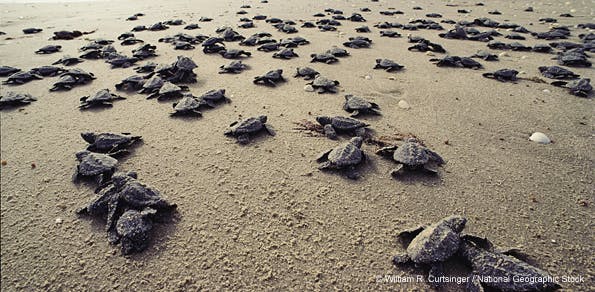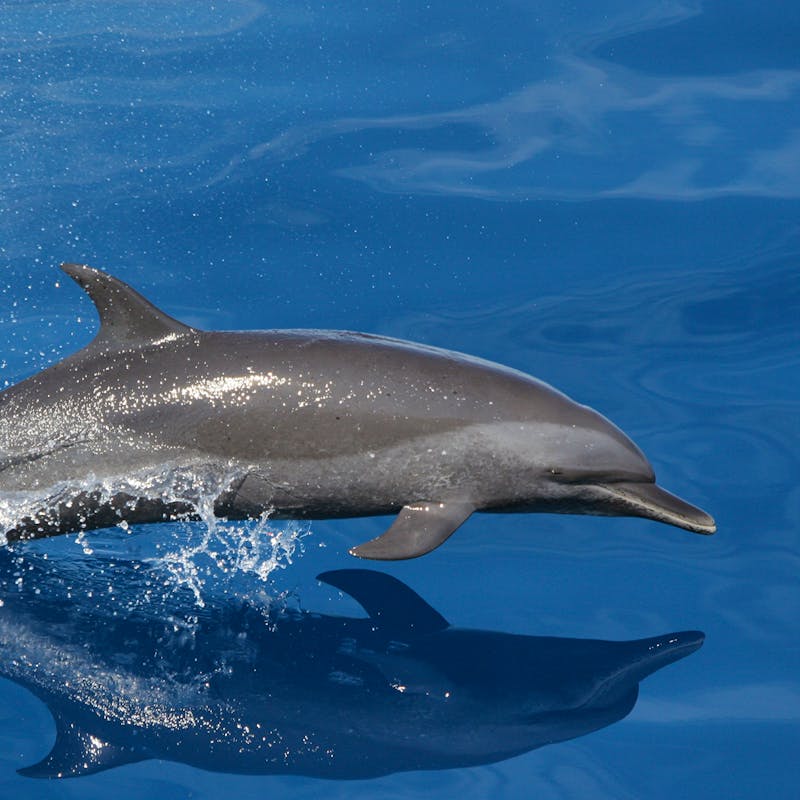Haley McKey, Communications Associate
After successfully battling yet another attack on Cape Hatteras National Seashore’s off-road vehicle rules in June, it was exciting to see what the summer would bring. Would the sea turtles that depend on the park’s beaches repeat last year’s success?
Well, they didn’t just meet last summer’s record of 222 nests: they broke it! As of August 12th, the North Carolina Wildlife Resources Commission has counted 232 nests at Cape Hatteras, beating the 2012 count by ten nests! There may be even more in the coming weeks before the season ends in September. And this is a huge improvement on the 2011 count of 147 nests just one year before the new rules were put in place.
This is fabulous news for sea turtles, which are struggling to survive and thrive in spite of predation and human impacts. All of the five sea turtle species found at Cape Hatteras are endangered or threatened, which include leatherback, loggerhead, hawksbill, Kemp’s Ridley and green sea turtles.
Newborn sea turtles face a long and perilous journey. From the moment they hatch, they’re threatened by sea birds, crabs and other shore predators. If they make it safely to the ocean, they’re still prey to fish and other marine wildlife. They’re also in danger from human refuse: sea turtles may mistakenly consume garbage bags or other trash, confusing them for prey such as jellyfish. Combined with the dangers of entanglement with commercial fishing nets, boat collisions and even oil spills, it’s easy to see why scientists estimate that only about one percent of sea turtle hatchlings survive to reproductive maturity. It also means the success of every sea turtle nest matters.
It wasn’t until last summer that the National Park Service finally enforced rules managing off-road vehicle, or ORV, use on the beach at Cape Hatteras. This made the shore safer for mother sea turtles and their precious nests, and it showed: the 222 nests laid at the national seashore were an extremely positive sign that the rules were making a difference. This summer’s banner crop of nests and turtles helps reinforce that early success.
This is great news, but it’s important not to forget that ORV enthusiasts and other groups at Cape Hatteras have been fighting against any kind of safeguards for pedestrians and wildlife for years. The attack in June was only the latest attempt at weakening or doing away with them altogether. For decades before Defenders of Wildlife and other conservation groups turned to the courts for help getting the NPS to implement these rules, the park’s beaches were overrun with vehicles.
But as long as groups challenge the protection of sea turtles at Cape Hatteras, Defenders will be there to fight for them. These amazing and ancient creatures deserve a great chance at survival. At Cape Hatteras, they’ve gotten just that.






Follow Defenders of Wildlife
facebook bluesky twitter instagram youtube tiktok threads linkedin